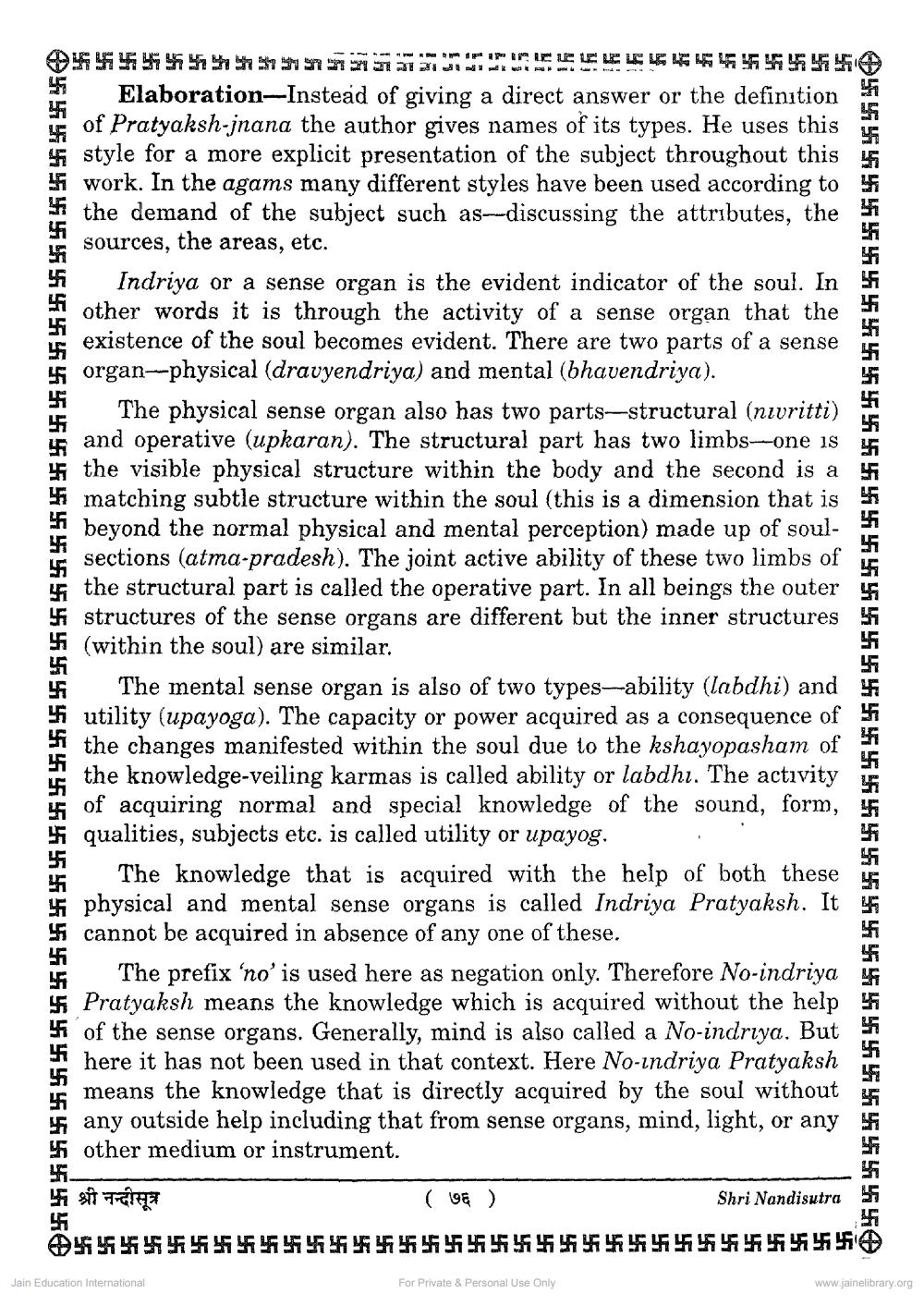________________
如听听听听听听听听听听听听听听听
55 55 55440
0545556957997393937237232TTLE ELLE 444 999999999
Elaboration-Instead of giving a direct answer or the definition of Pratyaksh-jnana the author gives names of its types. He uses this
le for a more explicit presentation of the subject throughout this 4 45 work. In the agams many different styles have been used according to 4
the demand of the subject such as-discussing the attributes, the sources, the areas, etc.
Indriya or a sense organ is the evident indicator of the soul. In other words it is through the activity of a sense organ that the
existence of the soul becomes evident. There are two parts of a sense ki organ--physical (dravyendriya) and mental (bhavendriya).
The physical sense organ also has two parts-structural (nivritti) 4 and operative (upkaran). The structural part has two limbs--one is " the visible physical structure within the body and the second is a 51 matching subtle structure within the soul (this is a dimension that is
beyond the normal physical and mental perception) made up of soul
sections (atma-pradesh). The joint active ability of these two limbs of Hi the structural part is called the operative part. In all beings the outer 4 structures of the sense organs are different but the inner structures 66 (within the soul) are similar.
The mental sense organ is also of two types-ability (labdhi) and ! 4i utility (upayoga). The capacity or power acquired as a consequence of
the changes manifested within the soul due to the kshayopasham of 911
the knowledge-veiling karmas is called ability or labdhi. The activity 5 of acquiring normal and special knowledge of the sound, form, 45 4 qualities, subjects etc. is called utility or upayog.
The knowledge that is acquired with the help of both these 4 physical and mental sense organs is called Indriya Pratyaksh. It 4
i cannot be acquired in absence of any one of these. LFS The prefix 'no' is used here as negation only. Therefore No-indriya 5 Pratyaksh means the knowledge which is acquired without the help 46 \1 of the sense organs. Generally, mind is also called a No-indriya. But
here it has not been used in that context. Here No-indriya Pratyaksh
means the knowledge that is directly acquired by the soul without 5 any outside help including that from sense organs, mind, light, or any 5 other medium or instrument.
555445545454545454545445541 55 55 55 55 55
$ $$ $1414141414.5155 41 41
454545454
卐 श्री नन्दीसूत्र
Shri Nandisutra
乐乐听听听听听听听听听听听听听听听听听听听听听听听听听听听你听听听全
Jain Education International
For Private & Personal Use Only
www.jainelibrary.org




